 W
WThe Waterloo Battlefield is located in the municipalities of Braine-l'Alleud and Lasne and Waterloo, about 15 kilometres (9.3 mi) south of Brussels, and about 2 kilometres (1.2 mi) from the town of Waterloo. The ordering of the places in the list is north to south and west to east.
 W
WThe Caillou Museum is housed in the building where Napoleon Bonaparte spent the night and early morning before the Battle of Waterloo on 18 June 1815.
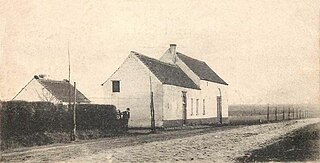 W
WDecoster's house was a landmark location during the Battle of Waterloo. It stood on the eastern side of the Waterloo–Genappe main road south of the junction with the minor road to Plancenoit. According to Jean-Baptiste Decoster Napoleon spent the early part of the Battle of Waterloo and around Rossomme and then at about 17:00 moved to a position near Decoster's house where he remained until about 19:00.
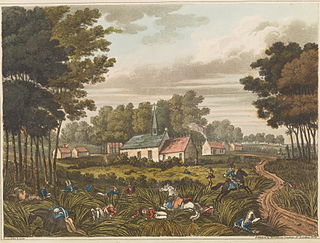 W
WChâteaux Frischermont or Fichermont in the Belgian municipality of Lasne is now a ruin. At the start of the Battle of Waterloo in 1815 it was garrisoned by Dutch soldiers on the easternmost flank of Wellington's defensive line.
 W
WThe Gordon Monument is a neoclassical monument to a slain warrior on the battlefield of Waterloo. The person commemorated is Lt Colonel Sir Alexander Gordon (1786–1815). It was erected in 1817 by the siblings of the deceased who included a future Prime Minister, Lord Aberdeen.
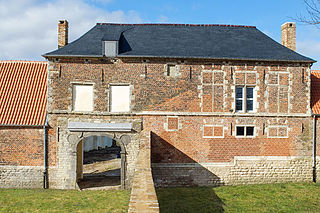 W
WChâteau d'Hougoumont is a walled farm compound, situated at the bottom of an escarpment near the Nivelles road in the Braine-l'Alleud municipality, near Waterloo, Belgium. The site served as one of the advanced defensible positions of the Anglo-allied army under the Duke of Wellington, that faced Napoleon's Army at the Battle of Waterloo on 18 June 1815.
 W
WLa Belle Alliance is an inn situated a few miles south of Brussels in Belgium, chiefly remembered for its significance in the aftermath of the Battle of Waterloo.
 W
WLa Haye Sainte is a walled farmhouse compound at the foot of an escarpment on the Charleroi-Brussels road in Belgium. It has changed very little since it played a crucial part in the Battle of Waterloo on 18 June 1815.
 W
WThe Lion's Mound is a large conical artificial hill located in the municipality of Braine-l'Alleud, Belgium. King William I of the Netherlands ordered its construction in 1820, and it was completed in 1826. It commemorates the location on the battlefield of Waterloo where a musket ball hit the shoulder of William II of the Netherlands and knocked him from his horse during the battle. It is also a memorial of the Battle of Quatre Bras, which had been fought two days earlier, on 16 June 1815.
 W
WThe Memorial of Waterloo 1815 is a Belgian museum complex located on the site of the Waterloo battlefield in Belgium. It includes a museum inaugurated in 2015, the Lion's Mound, the Panorama of the Battle of Waterloo and the Hougoumont farm.
 W
WMont-Saint-Jean is a hamlet located in the province of Walloon Brabant, Belgium, south of Waterloo located partly on Waterloo and partly on Braine-l'Alleud where the National road (N5) going from Brussels to Charleroi crosses the National road (N234) going from Nivelles to Leuven.
 W
WPapelotte Farm is located at Rue Du Dimont a rural road in the Municipality of Braine-l'Alleud around 15 km (9.3 mi) south of Brussels, Belgium. On June 18th, 1815 during the pivotal Battle of Waterloo it served as one of the advanced defensible positions of the Anglo-allied army under the command of the Duke of Wellington. Along with the walled farm compounds of Hougoumont and La Haye Sainte, it proved to be instrumental to the delay and the disruption of the opposing Napoleonic army's progress on the battlefield. Napoleon diverted disproportionately large numbers of troops in order to capture or eliminate these perimeters, while he failed to achieve a decisive break through in one of several attacks on the lines of the Allies.
 W
WPlancenoit is a Walloon village and section of the municipality of Lasne, Walloon Brabant, Belgium. The village was a key strategic point during the Battle of Waterloo as it was the main focal point of the Prussians' successful flank attack on Napoleon's army.
 W
WThe Sonian Forest or Sonian Wood is a 4,421-hectare (10,920-acre) forest at the southeast edge of Brussels, Belgium.
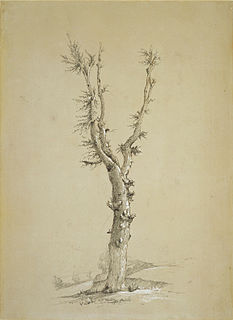 W
WThe Waterloo Elm was located just south west of the intersection of the sunken land and the Genappe–Brussels main road. It was the Duke of Wellington's command post for much of the Battle of Waterloo. The tree was killed by souvenir hunters after the battle. It was felled in 1818 and made into furniture, including a chair, made by Thomas Chippendale, the younger, that was presented to George IV and remains in the British Royal Collection.
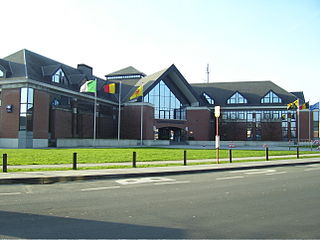 W
WWaterloo is a municipality in the province of Walloon Brabant, Belgium, which in 2011 had a population of 29,706 and an area of 21.03 km2 (8.12 sq mi). It is northeast of the larger town of Braine-l'Alleud, which is the site of the Battle of Waterloo, where the resurgent Napoleon was defeated for the final time in 1815. Waterloo lies a short distance south of Brussels, the historical capital of the nation. Historically Flemish, Waterloo is now a Francophone town right on the regional and language border between Flemish Brabant and Walloon Brabant.
 W
WThe Wellington Museum in Waterloo, Belgium is located in the house where the Duke of Wellington, spent the night before and after the Battle of Waterloo . The museum contains information about the Duke of Wellington, the Waterloo Campaign, the main phases of the Battle of Waterloo a Gallery and contemporary military artefacts from the armies that fought in the battle.